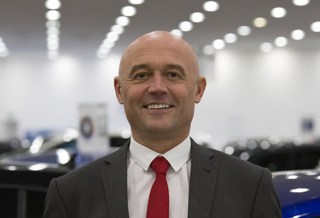While dealerships aren’t dead yet, their survival could be under threat if the automotive industry fails to adjust to changing customer expectations. Co-founder and executive director of experience design specialist Foolproof, Peter Ballard, explains how dealerships could safeguard their position by seamlessly joining digital and physical experiences.
Businesses across sectors need to improve their digital touchpoints as customers are increasingly looking to engage online with brands.
For the automotive industry, the display model for selling cars is changing as online will become central to the future of car-buying - according to a recent KPMG study revealing that 80% of automotive executives predict that brick-and-mortar networks are becoming redundant.
How customers view purchasing a vehicle has significantly evolved. While many choose to rent or lease their vehicles, our insight gathered about automotive customers indicates that whilst they would be happy to commit to a smaller monthly amount online, they couldn’t imagine paying the full cost of a car online.
Adjust or turn to rust
The change in the ownership model also has implications for customer engagement in physical dealerships as well as the digital journey to vehicle ownership.
Our research tells us that in a world where digital has become the default sales channel, when it comes to cars, humans still have a part to play.
People continue to visit dealers because the process of customisation is more difficult online and digital channels often fall short in delivering information. Customers also don’t believe they’re getting the best deal online.
Shopping for cars isn’t a binary experience, as one of our research participants said, “I like to talk to a human. I like personal contact for big purchases.”
The best digital experiences will adjust to be more human-like, instilling confidence in buyers, and reassuring them that the online price is the best deal.
Our work with automotive brands has unveiled valuable insight about the importance of customer-focus in the online shopping journey of automotive customers.
Dealerships need to meet their audiences where they are, not where they want them to be. This is crucial for delivering a positive brand interaction, online and off.
We’ve identified three trends in automotive customer attitudes, providing insight into a seamless digital-physical experience for the industry.
1: Connection - Customers are more connected than ever. They expect access to information, ability to self-serve and have a growing preference to transact on demand from mobile devices.
2: Personalisation - Customers expect to have personalised, relevant and engaging conversations with brands. A move away from simple facts and towards authentic, emotionally-driven relationships. The more personalised the experience, the happier the customer.
3: Partnerships - Digital technology is shaping the world around us in a different way. Technology isn’t just being incorporated into our lives, humanity is being embedded into the technology itself. With technology that responds to people based on their wants and needs, customer expectations of the relationship they have with a company is changing, from provider to partner.
Enriching physical with digital
These trends show a change in how customers expect to interact with brands in the future. So how do providers make better use of digital to enrich the dealership customer experience?
We worked with Suzuki on their car-buying experience through their website redesign. The aim was to create a frictionless experience, making the digital-to-dealership transition easier. While our work here was instrumental in enhancing the digital journey, it didn’t bring technology into the offline experience of car-buying in a dealership.
The dealership model has already undergone some changes: Rockar’s partnership with major automotive brands brought us the opening of ‘showrooms’ in shopping centres. Using tablets, staff conduct everything on digital, meeting the customer’s expectations for a hassle-free experience.
Customers want their digital research to link up with their dealership experience. Here’s how brands can create a seamless digital-physical experience:
1. Dealerships need to bring the screen into the sales process, showing customers on the showroom floor how the car they’re interested in could look with upgrades. Tablets could be used to present a digital catalogue, and in the future they could have an AR overlay that puts the upgraded car in the room with the customer.
2. Sales are rarely made on a customer’s first visit, so dealerships could enhance this experience by connecting customers with digital content they can take home. If customers configure a car digitally on the showroom floor, dealers should email this to the customer so they can refer to it while making their decision at home. Imagine creating a digital version they could put in their driveway using AR?
The dealership isn’t dead, it’s changing, and dealerships need to join up the digital experience currently offered online with the physical experience offered in-store.
Customer expectations will continue to shift, so the industry should begin to formulate insight around the effect they’ll have on dealerships of the future.
Imagine, customers of the future will no longer be influenced by how well the car handles, but by their ability or not to watch Netflix during their commute.
The reality of this may be a few years out, but it’s nevertheless a realistic scenario. To futureproof the dealerships of today, the industry needs to shift its thinking around vehicle ownership into top gear.
Author: Co-founder and executive director of experience design specialist Foolproof, Peter Ballard (pictured)



















Login to comment
Comments
No comments have been made yet.